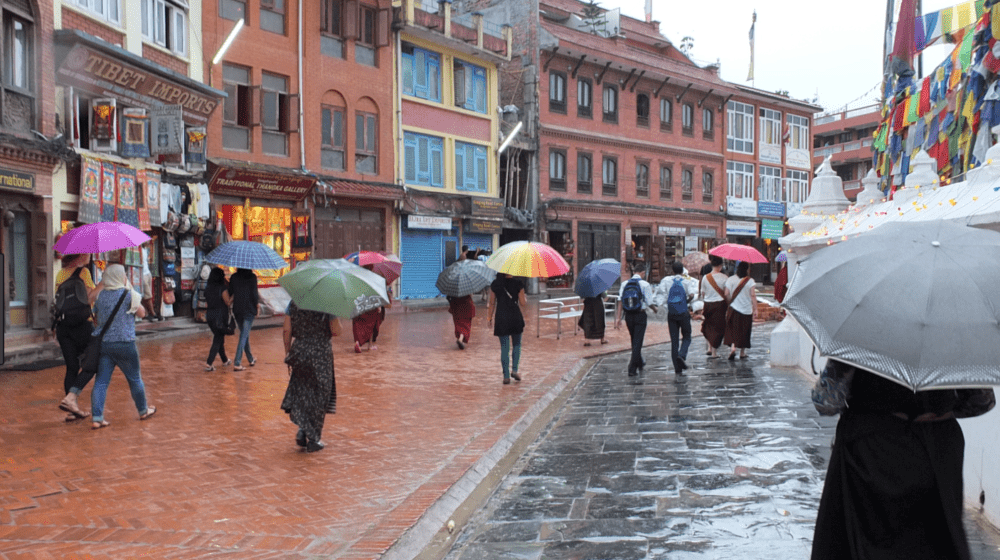
It’s the rainy season in Nepal. The Temal Jatra Festival last week marks the beginning, and it rains every day, mostly in the afternoon. This week I’ll show you a few interesting things about living in Kathmandu.
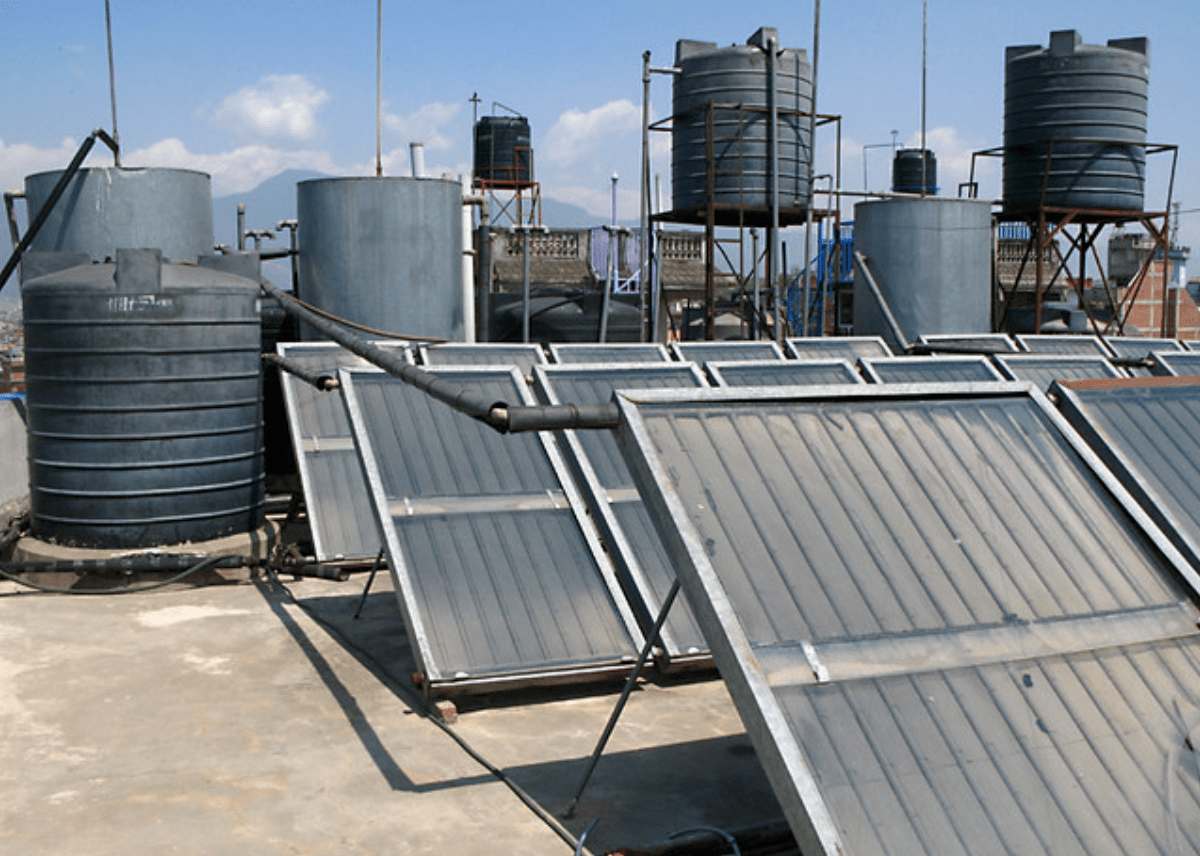
There’s no running water to speak of in Kathmandu. I’m lucky to live in an apartment building with seven units, and we have a huge water tank on the rooftop. It’s filled by pumping water through pipes upstairs. Passive solar panels provide enough power to give hot water almost every day, although you never know how long it’s going to last. So when you’re using hot water, you gotta work fast!
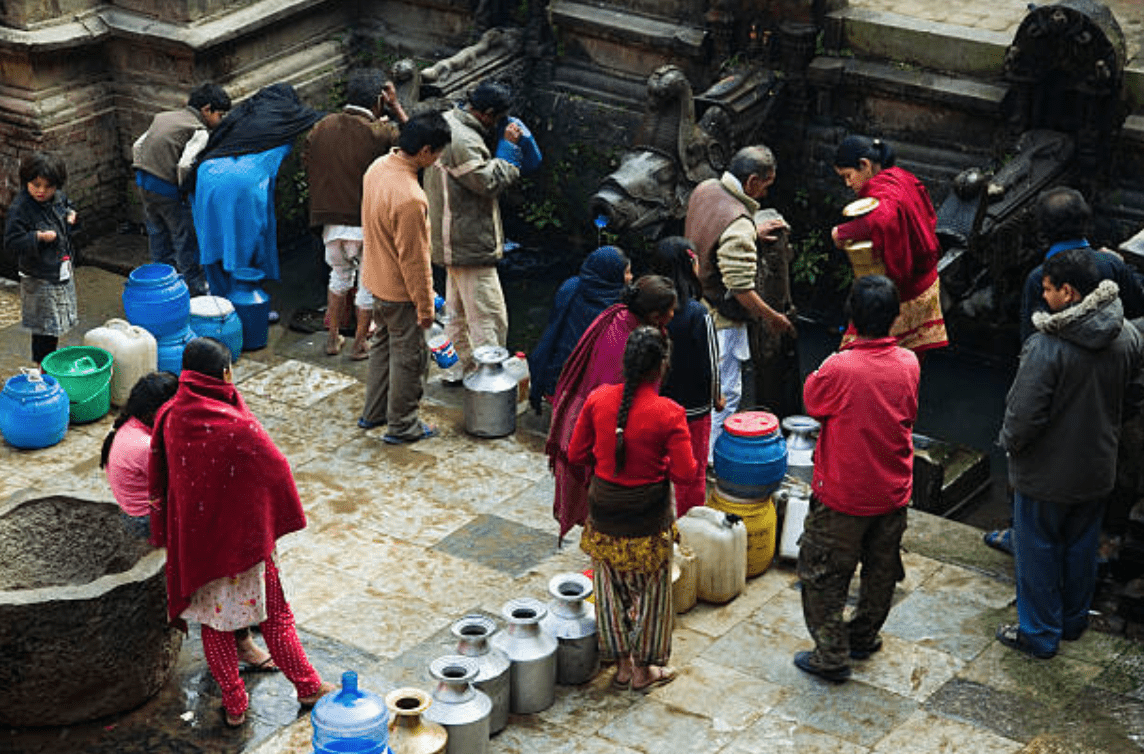
Many people have no running water in their homes. So gathering water is a daily operation that requires patience and time.
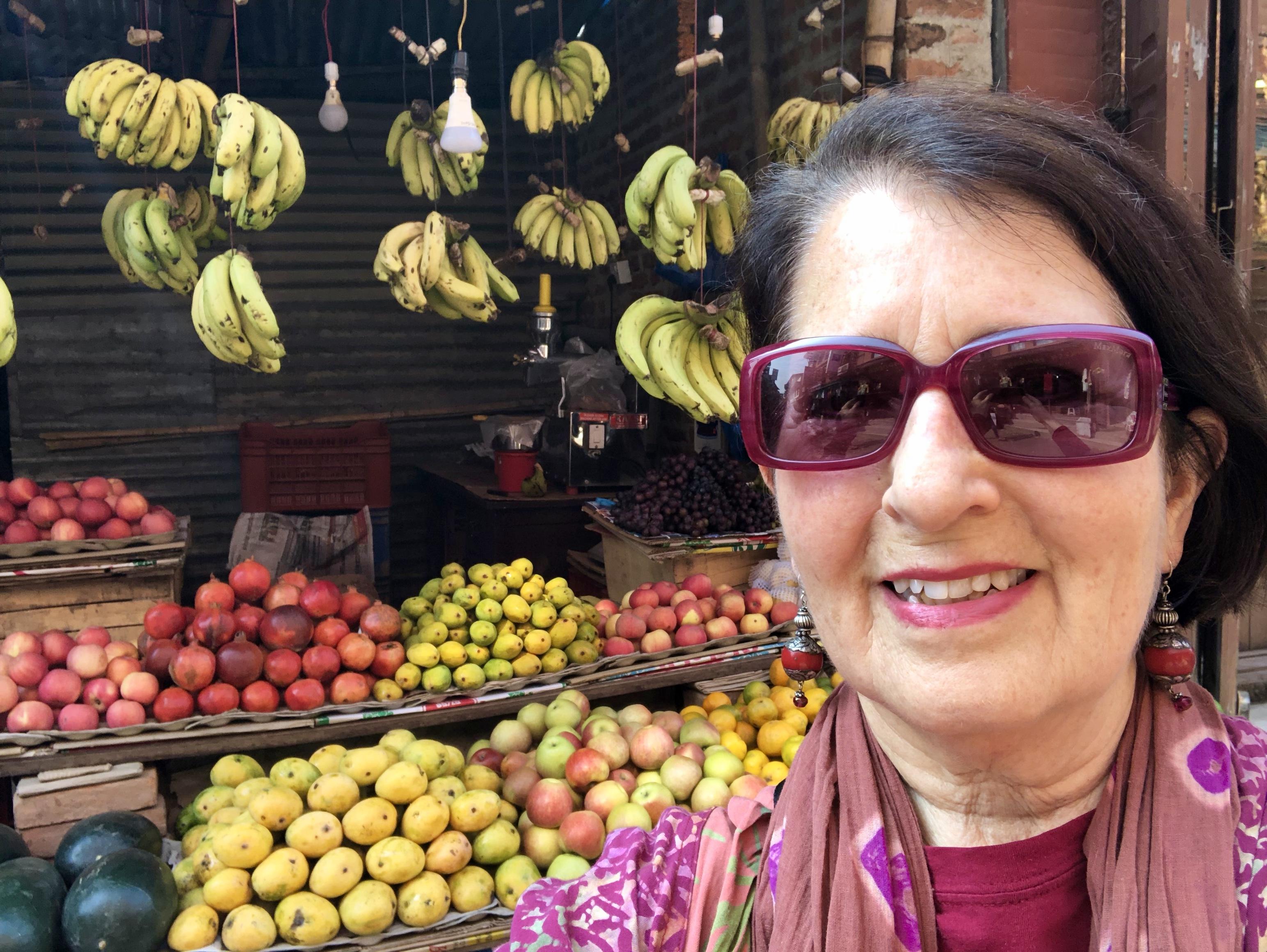
Every day I walk about a mile to the stupa to do my chanting and walk around it, which is called doing the “kora”. This is my street, and this is the store where I buy fruits. Every type of product has its own store. There’s a fruit store, a vegetable store, a meat store (which I haven’t figured out), a dairy store, etc.
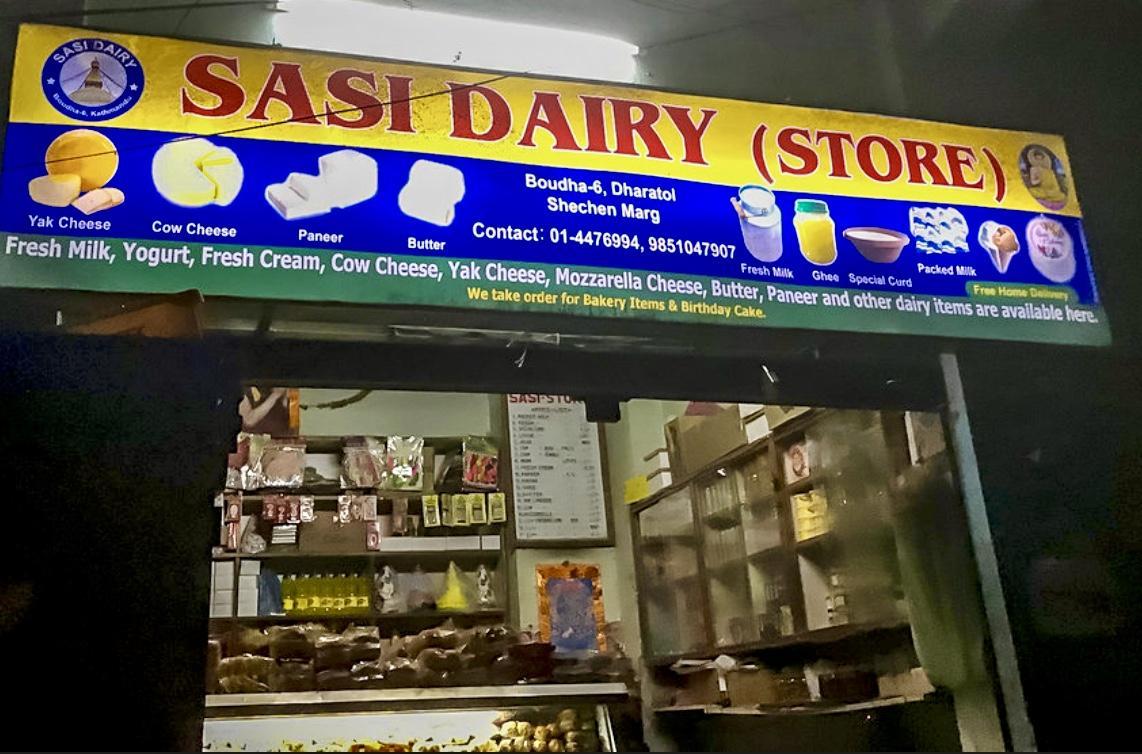
The dairy store is quite fascinating. You can get fresh raw Nepali milk, which is delicious, sold in a half liter plastic bag. You have to open and use it immediately or boil it. Boiled milk lasts about three days. Or you can buy a liter carton of pasteurized milk from India which tastes like chalk. You can get amazing yogurt with cream on top, but you have to ask for the unsweetened kind, as most folks prefer it with sugar. You can get amazingly wonderful fresh Nepali butter, or tasteless processed Indian butter. Cheeses are simple – the most popular is called paneer, like homemade Indian cheese. It’s like mild farmers cheese. The processed Indian cheese is non-dairy and horribly chemical tasting, so I skip it. You can buy chunks of yak milk candy that’s so chewey it’s like a jaw breaker – and many people like to knaw on it. The dairy store also has sweets and bread which I don’t use.
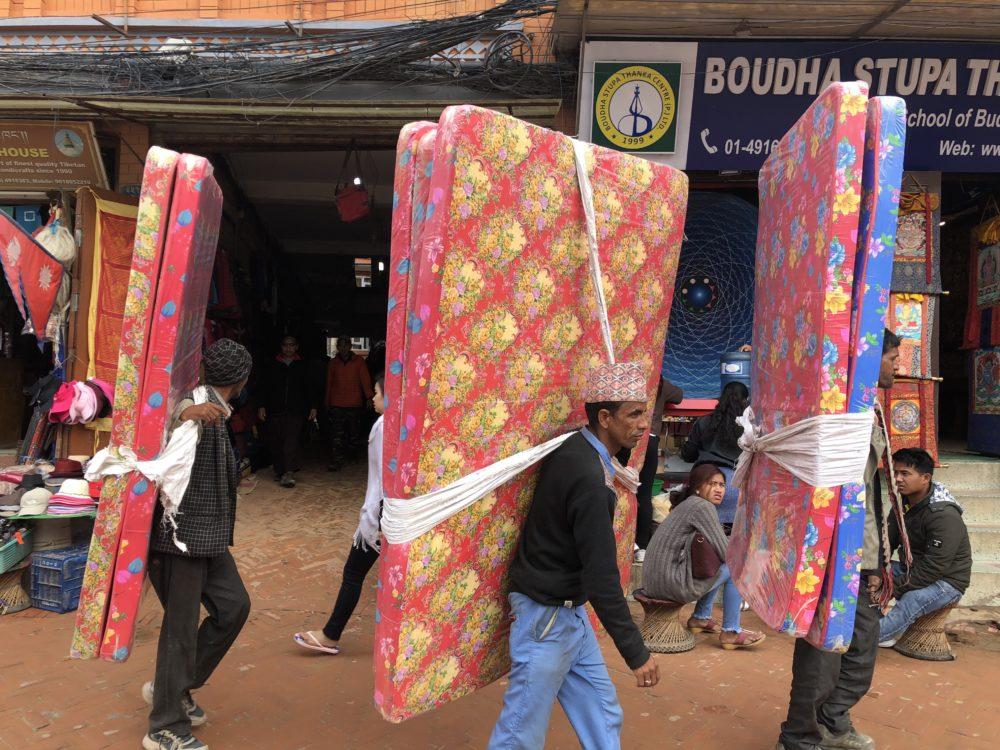
These guys are delivering mattresses. A colorful sight!
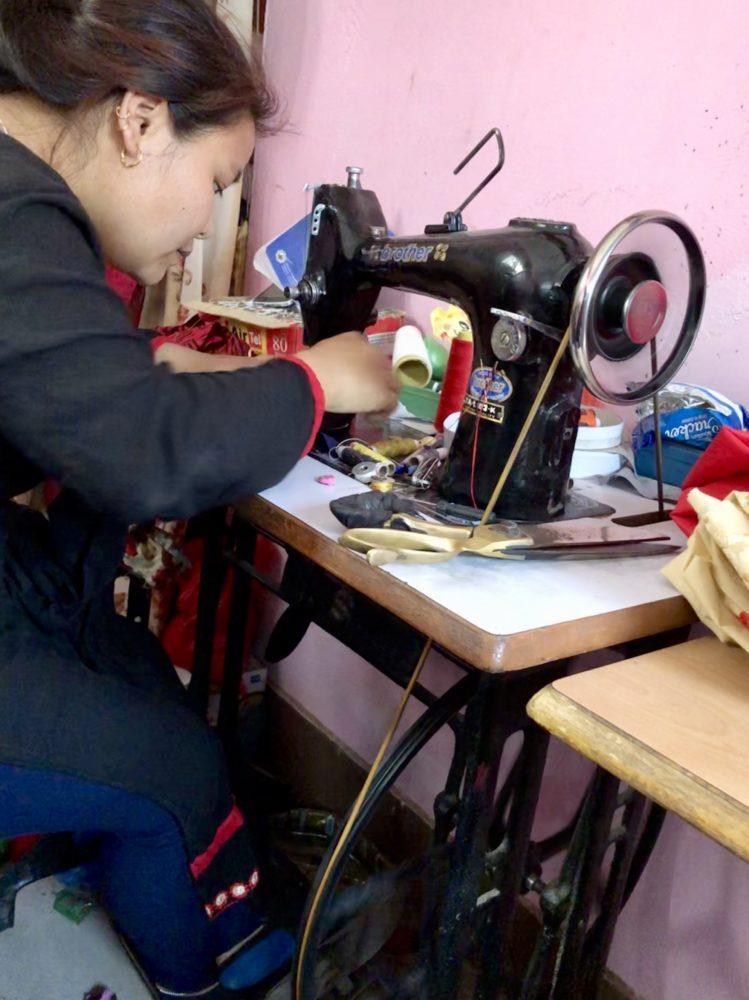
Yesterday I noticed a hole in my favorite $5 pants. I took it to this store near my house where they make cotton dresses. This girl said I could wait five minutes. Then she patched the hole and sewed it back and forth with a sewing machine. Now it’s perfect. Notice she’s using an old-fashioned treadle machine? This is what they all use, as you never know when the electric power will be down. Total cost for the repair: $0.20 cents.
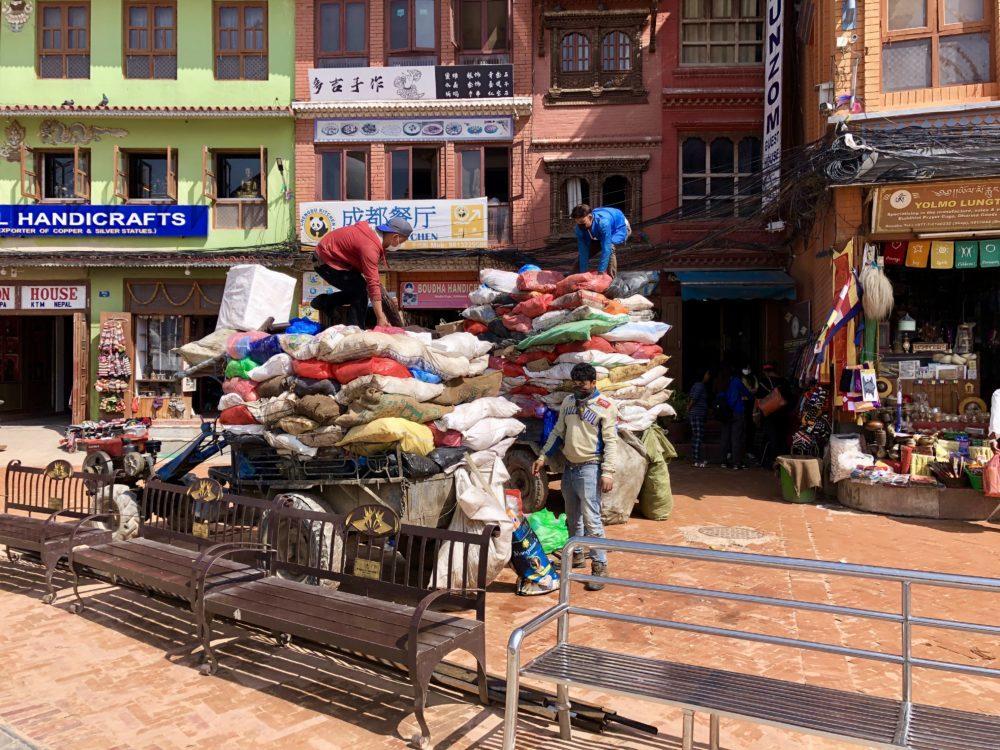
Garbage collection at the Boudha Stupa is a weekly task. This week they filled two trucks. All the store keepers pack it carefully and bring it out.
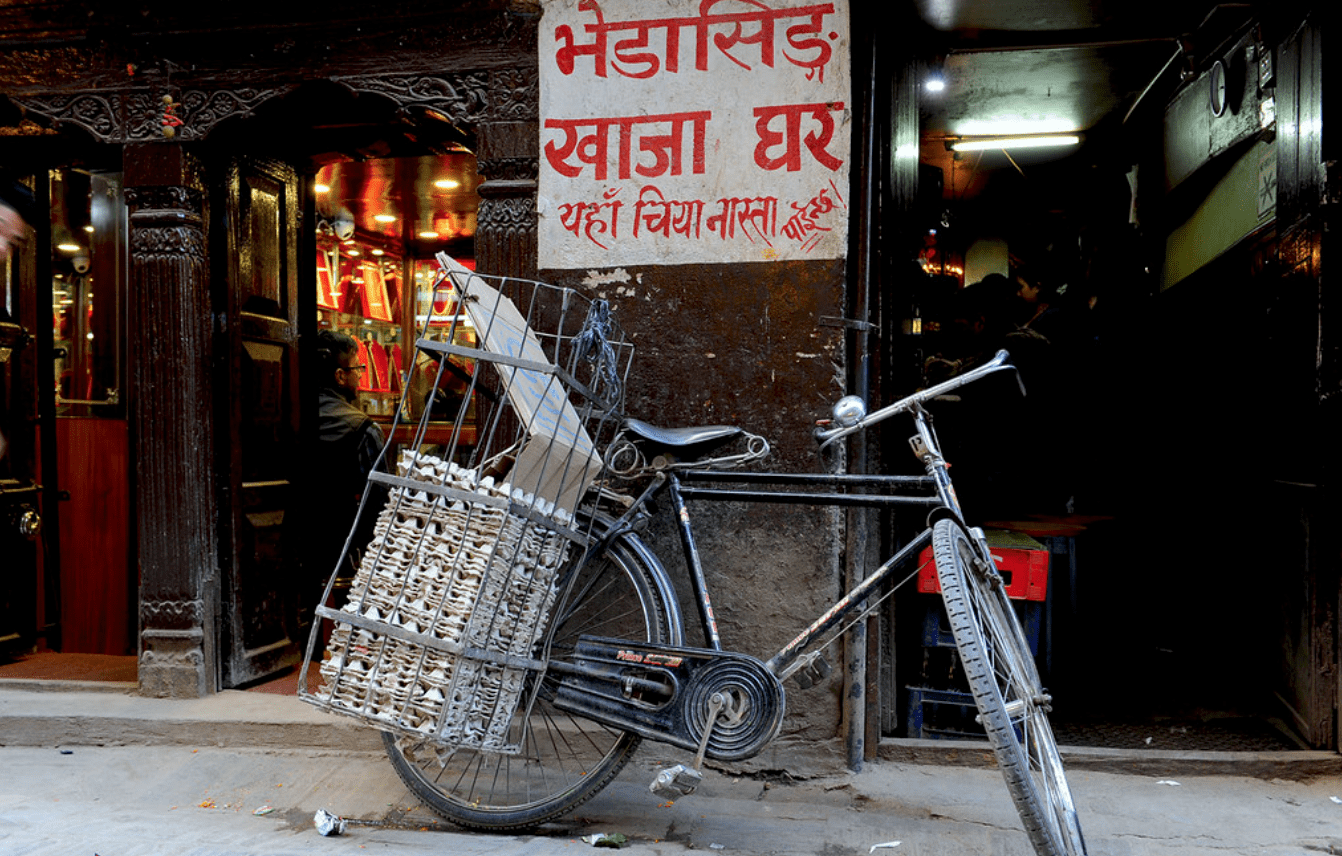
Fresh eggs are delivered to the egg store by bicycle in flats. We buy a flat at a time. Eggs are never refigerated here. But – you have to wash them! The eggs arrive covered with mud, feathers and chicken poop. Yes!
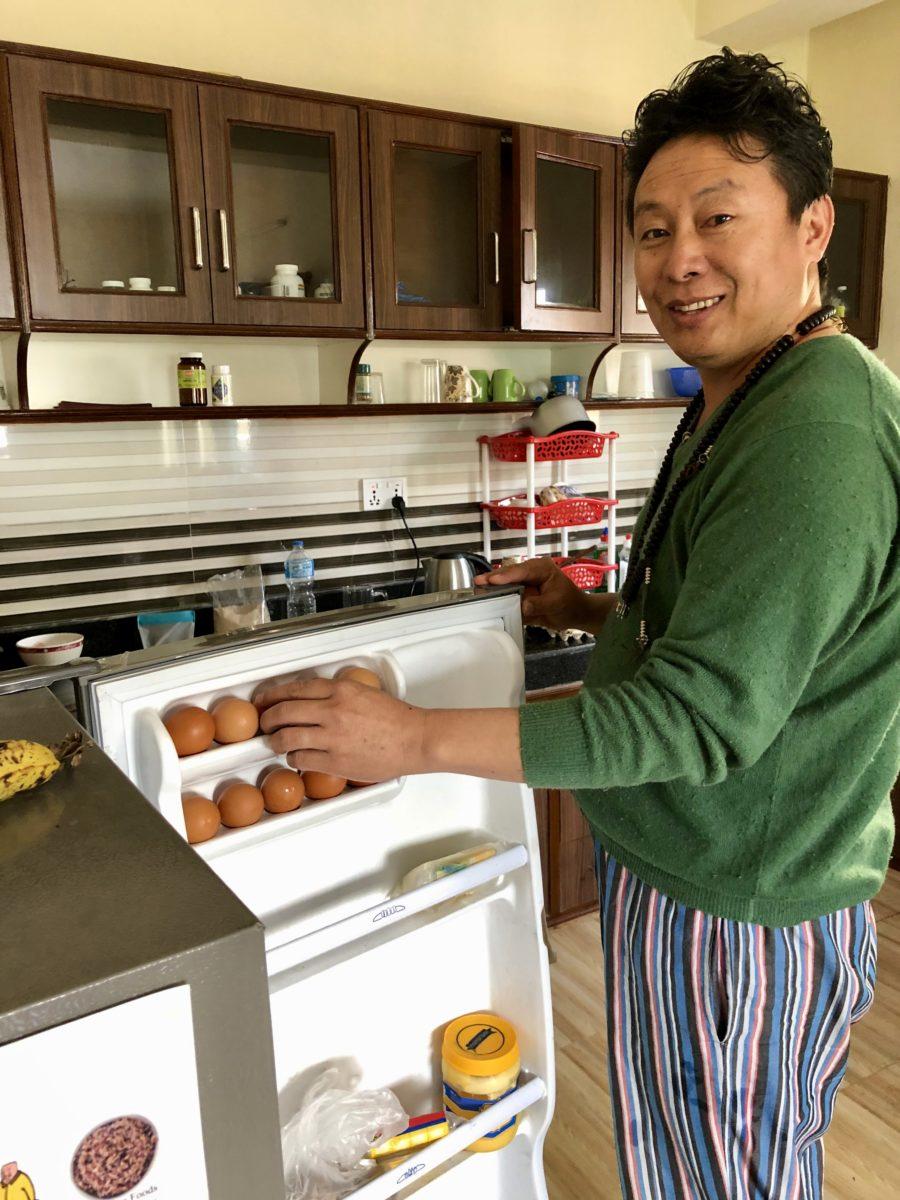
Yesterday Lama D. showed me how to wash the eggs. Now that they’re spotlessly clean, he’s putting some of them in egg bins in the refrigerator (not sure why).

Kopan monastery is a beautiful place not far from my house, up on a hill in Kathmandu. The Kopan Monastery teaches in the Gelug tradition of Tibetan Mahayana Buddhism under the guidance of Lama Zopa Rinpoche. The air is clean and the view across the valley magical.
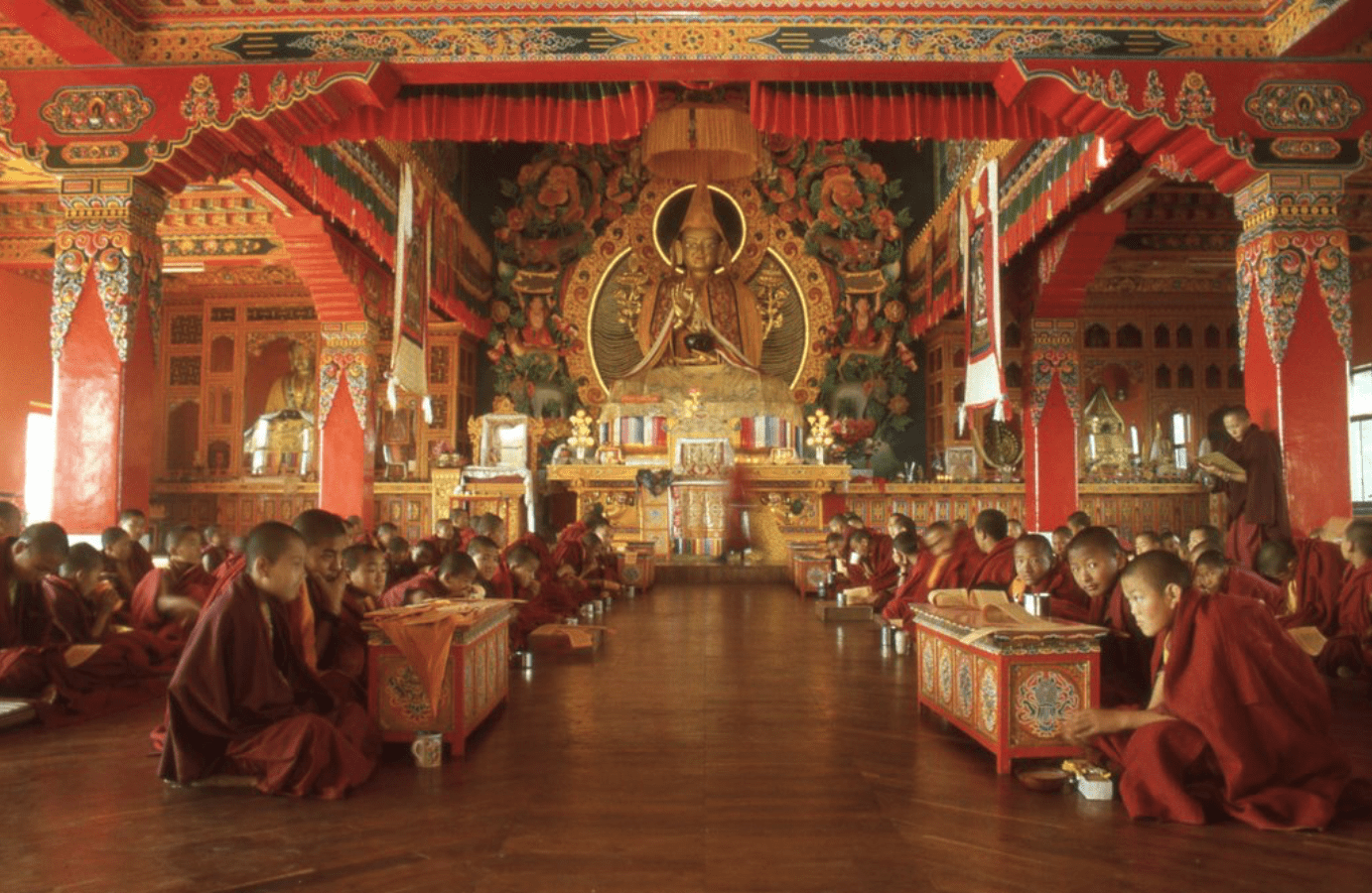
It is the home of 360 monks, lamas, teachers and workers. The monks come from all areas of Nepal and Tibet with ages ranging from seven to sixty years old. They have devoted their lives to the study and practice of the teachings of Buddha Shakyamuni, with special emphasis on the teachings of Lama Tsong Khapa, the founder of the Gelug Lineage.
The monastery was founded by Lama Zopa Rinpoche. After fleeing Tibet in 1959, Lama Zopa Rinpoche and his student Lama Yeshe met in the Indian refugee camp. After a couple of years of dire hardship, they were able to purchase and move to an old house with a small amount of land on top of the Kopan hill that used to belong to the astrologer to the former king of Nepal. Their first temple was built in 1971 -72. The monastery was funded almost completely by the Lama’s increasing number of Western disciples.
The monastery is well known for offering many training programs for Westerners.
And the monastery is also well known for their delicious vegetarian food. One of their most popular recipes is a unique mix of spices called Kopan Masala. It has such an incredibly tantalizing flavor, that I’m giving you the recipe here below.
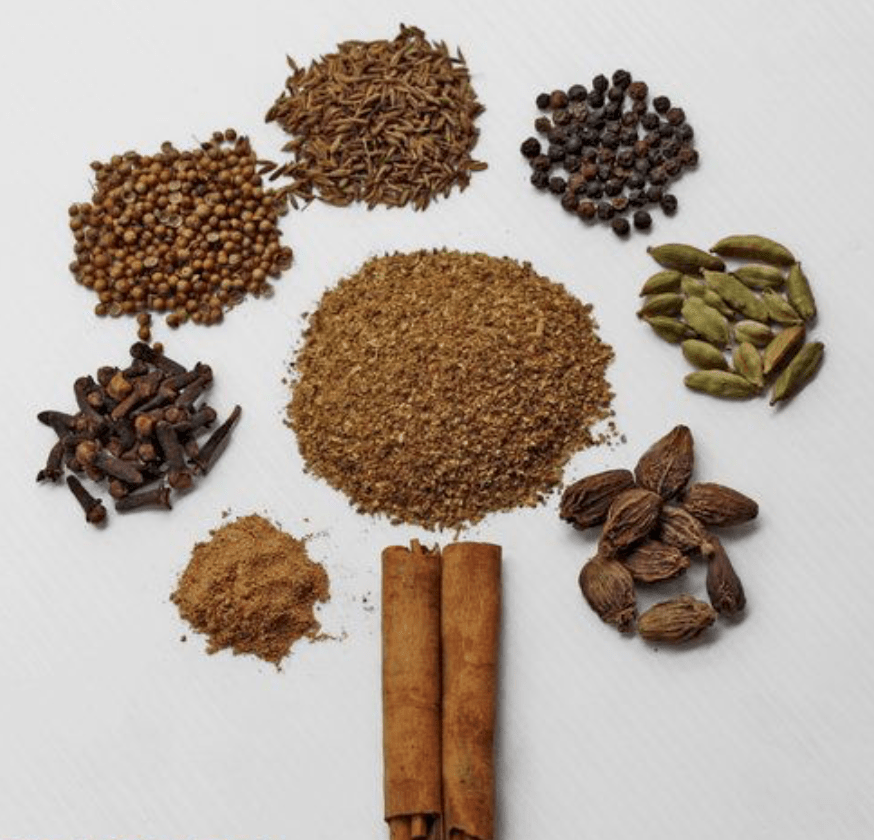
Kopan Masala is a special a sweet blend of spices. It is a kind of Tibetan Garam Masala that was formulated by the Rinpoche at the Kopan Monastery in the Kathmandu valley of Nepal.
Kopan Masala, Tibetan condiment from Kopan Monastery
- 1/3 cup Coriander seeds
- 1/4 cup Cumin seeds
- 10 Black cardamom pods,peeled
- 15 Green cardamom pods,peeled
- 25 Cloves
- 2 Cinnamon sticks,broken up
- 1 teaspoon Black peppercorns
- 1/4 teaspoon Freshly ground nutmeg
Instructions:
Combine coriander, cumin, black and green cardamom, cloves, cinnamon, peppercorns and nutmeg and grind finely, but not to powder, with mortar and pestle, rolling pin, coffee grinder or food processor. Store in airtight jar. Makes about 1/2 cup. enjoy!
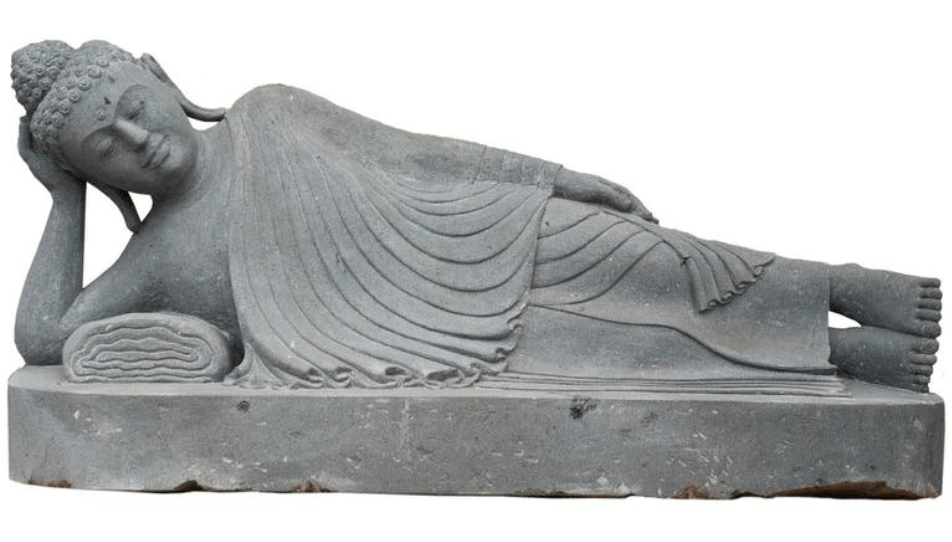
Thanks for checking in! My writing projects are going well and I’m almost ready to send out book proposals to publishers. Wish me luck!


